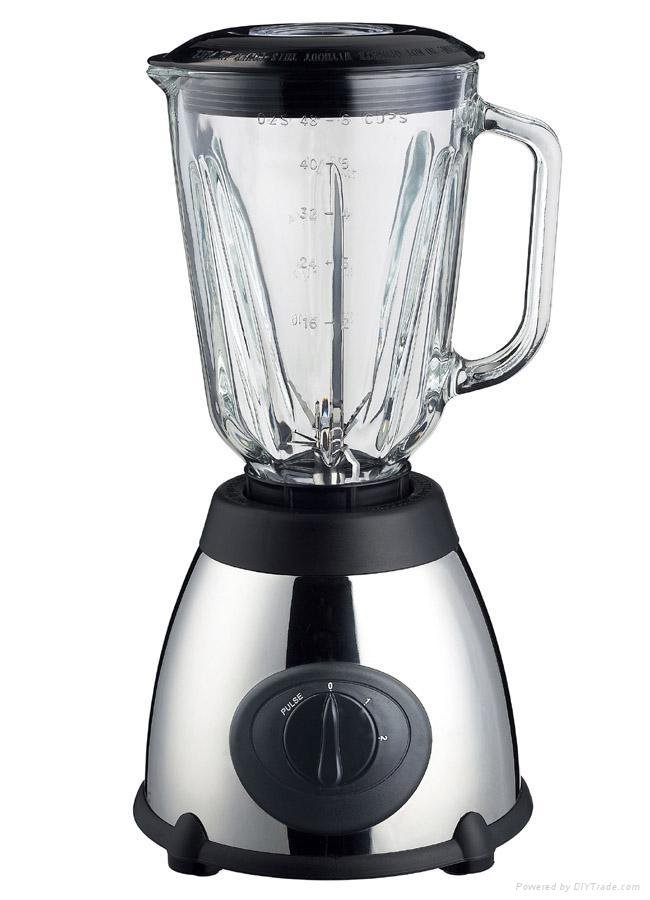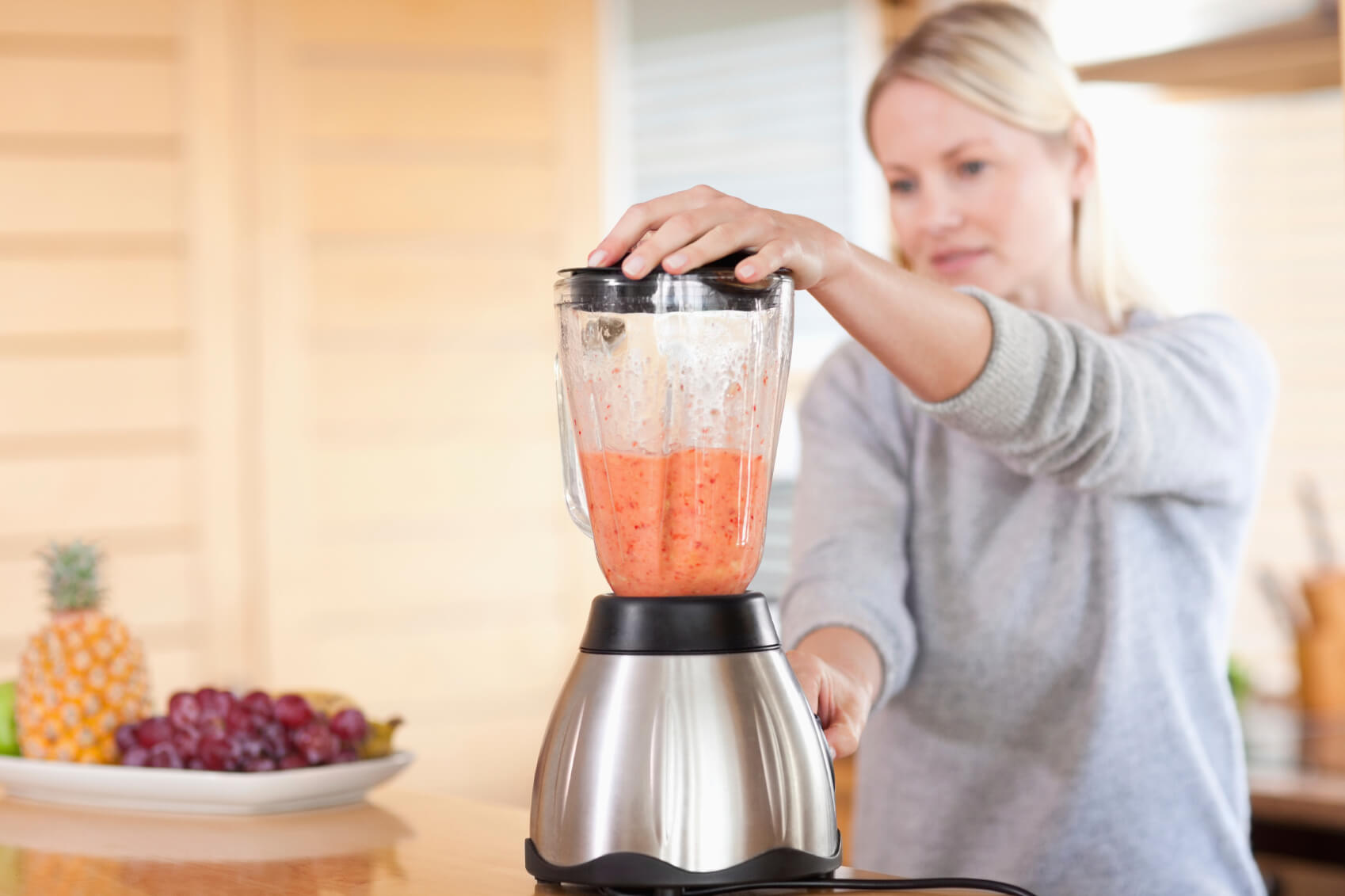In today’s fast-paced world, kitchen appliances are crucial in simplifying our daily cooking routines. Blenders have stood the test of time as an essential tool for creating delicious smoothies, sauces, and soups. However, with technological advancements, blenders have evolved beyond their traditional functions to become versatile kitchen companions. This blog post will explore the new age of blenders, uncovering their hidden potential and innovative features that go beyond boundaries. Join us as we discover the power of versatile blenders.
The Evolution of Blenders: From Smoothies to Gourmet Dishes
Blenders have transformed significantly from original designs intended primarily to craft perfect smoothies. This transformation mirrors the culinary world’s evolution, where the art of gourmet cooking and the desire for culinary experimentation have grown. Modern blenders now boast advanced functionalities, enabling them to seamlessly integrate into creating sophisticated dishes. Equipped with potent motors, these appliances can tackle various ingredients, offering multiple speed settings and specialized blades designed for precise results. This innovation allows for the effortless preparation of everything from velvety purees to finely milled nuts and seeds. As a result, blenders are no longer just an accessory for liquid concoctions but a cornerstone tool for anyone looking to explore the depths of gourmet cooking, facilitating the creation of complex flavors and textures with ease.
Unleashing Creativity with Blender Functions, You Never Knew Existed
The realm of modern blenders is rife with functionalities that transcend basic blending, opening up a world of culinary experimentation. With the introduction of pulse settings, users gain unparalleled control over texture, allowing for the perfect chop or blend every time. Pre-programmed modes are:
A game-changer.
Catering to specific recipes from smooth nut butters to refreshing frozen cocktails.
Ensuring consistent results with minimal effort.
A particularly intriguing feature in some high-end models is the inclusion of heating elements. This innovation streamlines the cooking process by combining blending and heating steps and expands the repertoire of recipes one can tackle – imagine crafting a creamy soup or a velvety sauce without ever turning on the stove. These advanced capabilities encourage culinary enthusiasts to experiment with new ingredients and techniques, pushing the boundaries of traditional recipes. Imagine transforming whole spices into fine, aromatic powders or whipping up emulsions and vinaigrettes with the precision of a seasoned chef. With these advanced features, your kitchen blender becomes an invaluable partner in culinary exploration, inviting you to experiment and create with ingredients and recipes it bothers me that you didn’t think possible.
Best Blender
Choosing the best blender depends heavily on individual needs, yet certain models stand out due to their exceptional performance, versatility, and durability. One such model that garners widespread acclaim is the Vitamix 5200. Renowned for its powerful motor and speed variability, this blender excels in handling a broad range of ingredients, from the toughest nuts to the softest fruits, ensuring a smooth blend every time. Its robust construction and easy-to-clean design make it a favorite among culinary professionals and home cooks.
Another notable contender is the Blended Designer Series, offering innovative features like a touch interface and pre-programmed cycles for various tasks, blending efficiency with modern aesthetics. For those seeking a more budget-friendly option without sacrificing quality, the Ninja Professional Blender provides an impressive blend of power and functionality, making it an excellent choice for everyday use. When evaluating the best-blender for your kitchen, consider factors such as motor strength, blade quality, and the versatility of settings to ensure you select a model that aligns with your culinary ambitions and lifestyle.
Must-Have Blender Attachments for the Experimental Chef
Elevating your culinary game requires more than just a high-powered blender; it necessitates an arsenal of attachments that can unlock new dimensions of food preparation. Certain attachments are indispensable for chefs keen on experimenting and pushing culinary boundaries. A food processor attachment, for instance, can dramatically expand your blender’s utility, allowing for efficient chopping, slicing, and dicing of ingredients—perfect for preparing vegetables for soups or garnishes. A citrus juicer attachment is another valuable addition, enabling the extraction of fresh juice with ease, which can add vibrant flavors to dressings, marinades, or refreshing beverages.
Perhaps one of the most transformative attachments is the immersion blender component. This tool facilitates the preparation of silky-smooth sauces and emulsions directly in the pot, minimizing cleanup and simplifying the cooking process. For those who enjoy homemade pasta or bread, a dough blade can knead and mix dough within minutes, offering a quick and effortless way to engage in baking. Lastly, a grinder or mill attachment can open up new possibilities for creating homemade spice blends or flour from whole grains, enhancing the freshness and flavor of your culinary creations. These attachments amplify your blender’s functionality and inspire exploration and innovation in the kitchen.
Commercial Blender
Commercial blenders elevate the blending experience to meet the rigorous demands of professional kitchens and food service establishments. These robust machines are designed to withstand heavy use, featuring powerful motors and durable components capable of processing large quantities of ingredients swiftly and efficiently. Unlike their residential counterparts, commercial blenders often come with larger pitchers or containers, some of which are made of high-strength materials like stainless steel or BPA-free polycarbonate, to handle the volume and intensity of a busy kitchen environment.
Key features that set commercial blenders apart include enhanced cooling systems to prevent overheating during continuous operation, noise reduction technologies for a more pleasant working environment, and user-friendly interfaces that ensure precision and consistency across multiple batches. Many models offer customizable speed settings and programmable cycles to tackle various tasks, from grinding grains and mixing dough to creating silky smooth soups and sauces. For businesses looking to expand their menu offerings or streamline their food prep processes, investing in a high-quality commercial blender can significantly impact efficiency and product quality, making it an indispensable tool in any culinary setting.
Beyond the Kitchen: Unconventional Uses of Blenders in Daily Life
Blenders, widely recognized for their culinary utility, offer various non-culinary applications that can simplify and enhance various aspects of daily life. For instance, crafting homemade beauty products such as face masks or scrubs becomes effortless. By blending natural ingredients like oats, honey, or avocado, individuals can create personalized skincare treatments that are effective and free from harsh chemicals. Additionally, blenders can be an invaluable tool for DIY enthusiasts looking to make their paints or craft materials. Mixing pigments or small batches of plaster can be done quickly and precisely, enabling a seamless creative process.
Furthermore, for those keen on maintaining a sustainable lifestyle, blenders can facilitate the creation of eco-friendly cleaning products. Ingredients like vinegar, baking soda, and essential oils can be combined to produce effective cleaners that are kind to the environment and gentle on surfaces. This unconventional use showcases the versatility of blenders and supports a move towards more sustainable household practices.
Embracing blenders’ multifunctional nature can lead to discoveries of innovative uses beyond their intended purpose, proving that this kitchen appliance is truly a jack-of-all-trades in culinary and daily life applications.
How to Choose the Right Blender for Your Needs?
Selecting the perfect blender for your culinary endeavors involves a nuanced understanding of your unique cooking preferences and requirements. Start by evaluating your primary uses: Are you a smoothie lover requiring a machine that can pulverize ice and frozen fruits precisely, or do you aspire to venture into gourmet cooking that might necessitate a range of speeds and attachments? The motor’s power is critical; a robust motor ensures versatility and longevity, allowing you to experiment with a broader spectrum of textures and ingredients.
Consider the size and material of the blender jar, as these elements directly impact the appliance’s practicality and durability in your kitchen. Glass jars, for instance, are heavier but eliminate the risk of retaining odours and stains. In contrast, plastic jars offer lightweight convenience and are often shatterproof. User-friendliness also ranks high on the priority list; look for a blender with intuitive controls and easy cleanup options to streamline your cooking process. Lastly, warranty and customer service support are indicators of a manufacturer’s confidence in their product and commitment to your satisfaction. By aligning these considerations with your personal needs and lifestyle, you’ll be well-equipped to make an informed choice that enhances your culinary adventures.
Industrial Blender
Industrial blender takes the capabilities of commercial blenders to a grander scale, focusing on the needs of industries that require bulk processing with precision and efficiency. These powerhouses are engineered to handle vast quantities of ingredients, offering high-volume capacity and the durability to withstand the rigours of continuous operation. Unlike their commercial or residential counterparts, industrial blenders are built with heavy-duty materials and feature specialized designs to uniformly mix, blend, or emulsify large batches of products. Their advanced control systems allow for meticulous customization of speed and blending cycles, accommodating food production, pharmaceuticals, chemical processing, and more requirements.
Some models are equipped with features like vacuum blending to eliminate air bubbles during processing, which is crucial for industries where texture and consistency are paramount. With safety mechanisms in place to protect operators and the integrity of the blend, industrial blenders represent the pinnacle of blending technology designed to meet the specific demands of large-scale production environments. Their integration into industrial processes streamlines operations and ensures consistent product quality, making them an indispensable asset for businesses looking to scale efficiently.
FAQs
What sets high-powered blenders apart from standard models?
High-powered blenders boast robust motors and enhanced capabilities, making them adept at processing tough ingredients like nuts and frozen items without a hitch. In contrast, regular blenders might falter with these harder-to-blend ingredients, lacking their high-powered counterparts’ motor strength and specialized features.
Can you prepare hot soups in a blender?
Certain blenders come equipped with built-in heating elements that can heat and blend ingredients simultaneously, allowing for the direct preparation of hot soups. It’s important to verify if a blender has this functionality, as not all models support the blending of hot liquids safely.
How should I go about cleaning and maintaining my blender?
For cleaning, blend warm water with a bit of dish soap at high speed for a quick cleanse, followed by a thorough rinse. To maintain your blender in top condition, avoid overloading, blending overly hot substances, or immersing the base in water.
Conclusion
The era of blenders as mere smoothie-makers is long gone, paving the way for an innovative chapter where these appliances are central to gourmet creations and everyday meals. Today’s blenders, equipped with state-of-the-art features, robust motors, and versatile capabilities, have revolutionized cooking creatively and efficiently. They empower seasoned chefs and culinary novices alike to push the boundaries of traditional cooking, inviting exploration into a world where textures, flavors, and techniques can be experimented with easily. As we’ve journeyed through the evolution of blenders, their multifunctional uses, and the pivotal role they play in various settings, from home kitchens to industrial environments, it’s clear that the selection of a blender is not just about an appliance but about choosing a partner in culinary exploration
This article was first published on:
| Other Good Articles to Read |
| Blogs-Nation |
| Blogs-Peoples |
| Bryan Smith Blogs |
| Intellect Blogs |
| The Fault In Our Blogs |
| Blogs Eu |
| Oz Forums |
| Recruitment Blogs |
| Zet Blogs |
| Id Blogs |
| Blogs Tudiolegale |
| Blogs Map |



